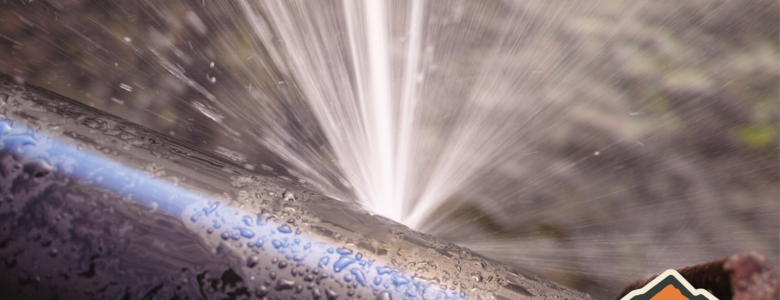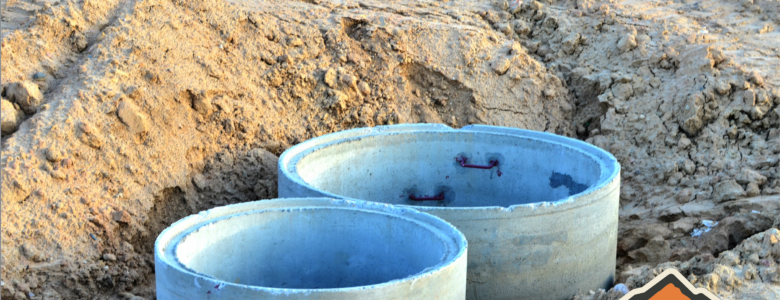The January 2024 edition of the Eagle’s View Newsletter is here, with an all new look and feel! In this issue, we learn about shopping local, local wintering raptors and more! Read here: https://bit.ly/3ui3ia6

To search Eagle Mountain records, go to our advanced records search tool here

The January 2024 edition of the Eagle’s View Newsletter is here, with an all new look and feel! In this issue, we learn about shopping local, local wintering raptors and more! Read here: https://bit.ly/3ui3ia6

UPDATE: On 1/31/24, a separate water main break has been identified in the same area. The same homes will be impacted with water service expected to be shut off mid-morning on Wednesday. Service is anticipated to return by 3:30 p.m. on Wednesday.
Eagle Mountain City Water Department crews are actively addressing the situation on Sparrowhawk Lane in Eagle Mountain.
A water main break has left 15 homes without water, impacting residents between East Balmoral and East Barn Owl Way. The City is currently working to assess the extent of the damage to the water main while working to implement a repair. As of 4 p.m. on Jan. 30, Water Department crews anticipated another eight hours until water service was restored in the area.
There is currently no estimated time for the completion of the repair. Affected residents are advised to stay informed by checking back to this article for updated information.
The water department assures the community that every effort is being made to expedite the restoration of water services to the affected homes.

On this date 10 years ago, the Utah County Sheriff’s Office reported that Sgt. Cory B. Wride had been shot and killed in the line of duty.
Wride had stopped to check on a pulled-over pickup truck on SR-73 between Eagle Mountain and Cedar Fort when he was shot by 27-year-old Jose Angel Garcia Jauregui. Wride eventually died from his injuries. Jauregui also died following a high-speed chase and shootout with law enforcement.
“He was my sergeant for two years,” said Garrett Dutson, Sheriff’s deputy for the Utah County Sheriff’s Office. “Myself and my partner, Max Morgan, were on duty with him that day.”
Dutson has been with the UCSO for 14 years, 10 of them with the Sheriff’s Office Eagle Mountain division. For two of those 10 years, Wride was Dutson’s sergeant.
Since his death, Wride has been hailed as a hero by the UCSO and many communities around the state, especially in Eagle Mountain.
Only a few months after his death, the state renamed SR-73, the road where he was killed in the line of duty, as Cory B. Wride Memorial Highway.
In 2018, Eagle Mountain City also opened Cory B. Wride Memorial Park, located near the Overland neighborhood.
Also along SR-73, near the location where Wride was killed, is the Cory B. Wride memorial, which proudly displays two American flags along with Wride’s name and badge number.
Each year on the anniversary of his death, the UCSO honors Wride with a moment of silence at the site of the memorial. Deputies not in attendance also participate via radio on the signal from dispatch.
“Sometimes, being out there, it seems like it just happened the other day,” says Dutson. “A lot of us that are in law enforcement, we do it for the purpose of protecting our communities and doing the right thing. And I know that’s what Cory’s big thing was, doing the right thing.”
Dutson, who helps organize the memorial each year on Jan. 30, is also responsible for the memorial case in honor of Wride that is displayed in the office of the Utah County Sheriff’s Office Eagle Mountain division at Eagle Mountain City Hall.
“His death reminds us of the importance of our job and taking pride in that job and doing what needs to be done to protect the awesome citizens that we serve,” says Dutson.

In an effort to ensure the continued reliability of its water supply, Eagle Mountain City is notifying residents of the potential for scheduled changes in its water well sourcing.
Residents are advised that additional water wells may be activated to facilitate essential maintenance and scheduled repairs. This regular and scheduled initiative is crucial in upholding the City’s commitment to delivering high-quality water to its residents while ensuring the longevity of its water infrastructure throughout the year.
The transition to alternative well sources is part of a routine maintenance plan aimed at optimizing the efficiency and functionality of the existing wells. Eagle Mountain City appreciates residents’ understanding and cooperation during this period, emphasizing that the temporary changes are vital for the overall well-being of the community.

To show community unity, Eagle Mountain City has announced the sale of newly branded hats as part of its rebranding campaign.
The city, known for its emphasis on the outdoors and recreational activities, aims to foster a sense of pride among residents through the sale of merchandise. These stylish hats, adorned with the City’s logo, are now available for purchase.
As the city continues to evolve, these hats serve as more than just fashionable accessories — they symbolize a commitment to the shared identity and the values that define Eagle Mountain. Residents are encouraged to participate by purchasing these limited-edition hats.
By blending fashion and civic pride, Eagle Mountain City is aiming to strengthen a sense of community one hat at a time.

Blast operations are scheduled to take place at the TM Crushing site on Mt. Airey Dr. this Wednesday, January 24, 2024, between Noon-4 p.m.
The operation, expected to impact the surrounding area with noise, may also slow traffic on SR-73 while detonations are taking place. Blast operations are scheduled periodically throughout the year for quarry work. Safety precautions and measures are assured to minimize disruptions. Motorists are encouraged to use an alternative route or adjust their commute times to accommodate the blasting.

Three accomplished individuals have recently been appointed to key positions within various boards and commissions in Eagle Mountain.
The appointments took place during the Jan. 16 meeting of the Eagle Mountain City Council.
Adelle Curtis, an advocate for the Eagle Mountain Public Library, will soon be taking on responsibilities on the Library Board for a two-year term.
Curtis expressed her dedication prior to her appointment.
“I LOVE to read and LOVE our library!” Curtis said. “We’ve been visiting the library 2-4 times a month for years.”
She emphasized her desire to eliminate the distance stigma associated with the library.
“I want to support the library and help eliminate the ‘it’s too far’ stigma so that more families will utilize our amazing library!”
Rod Hess, who currently serves on the City’s Parks Board, was appointed to the Eagle Mountain City Planning Commission for a three-year term.
Hess brings a wealth of experience as a landscape architect and land development consultant.
“As a Landscape Architect, I have worked as a land development consultant and have experience in designing, reviewing, and complying with subdivision and zoning ordinances.”
His current role with the Utah Department of Transportation as a senior landscape architect has given him a keen appreciation for the need to plan and prepare for future projects.
Hess, who has been a resident of Eagle Mountain since 2007, expressed his desire to actively participate in the review, planning and coordination of City development.
Karan Heffelfinger, joining the Senior Citizens Advisory Council for a four-year term, brings a passion for advocating for seniors’ needs.
The appointees took their oaths surrounded by the support of their families. The appointments of Curtis, Hess and Heffelfinger represent a dynamic addition to Eagle Mountain City’s boards and commissions.

Local Officials Day at the Utah State Capitol left a lasting impression on area high school students, and Eagle Mountain City Youth Council Mayor Ericsson Ansah-Antwi was no exception.
The event aims to foster civic engagement among local city youth councils in the state of Utah by providing speakers and learning opportunities for both high school students and local government leaders.
Ansah-Antwi, who attended the event at the capitol on Wednesday, highlighted the diverse and engaging activities that made the day a rich learning experience.
“In between breakfast and lunch, we were able to participate in a bingo activity that let us interact with members of Youth Councils from other cities, go on both a scavenger hunt and self-guided tour around the capitol, and participate in a mock committee, all of which let us explore various facets of city administration,” Ansah-Antwi said.
The event provided a unique opportunity for students to immerse themselves in the intricate world of state government and city administration.
Local Officials Day, organized by the Utah League of Cities and Towns (ULCT), acts as a way to bridge the gap between area youth, local officials and state legislators.
Ansah-Antwi emphasized the importance of practical experiences in understanding the workings of local government.
“During lunch, we heard from multiple leaders, including mayors and the governor, where we learned a bit about the future of Utah,” Ansah-Antwi said. “I’m really glad we were able to go, learn, and meet others. It was an overall great experience.”
The event provided a platform for students to gain insights into the future trajectory of Utah and connect with influential figures who play a pivotal role in shaping the state’s progress.
The event not only facilitated learning and exploration for the participating youth but also fostered meaningful connections and a sense of shared purpose in building a brighter future for Utah.

Eagle Mountain City is proud to announce that Tract, a developer of master-planned data center parks, has purchased 668 acres of land in the community. The purchase promises ongoing investment in the community’s Technology Overlay Zone. Read the press release here.

In response to inclement weather conditions, the Senior Center in Eagle Mountain has announced its closure for today (Wednesday, Jan. 17).
Typically operating from 10 a.m. to 1 p.m., the senior center has taken this precautionary measure to ensure the safety of the senior citizens who participate in various activities and enjoy lunch at the facility. Snowfall in the area prompted the decision to temporarily suspend operations, prioritizing the well-being of the attendees.
The closure is a proactive step to mitigate any potential risks associated with navigating snowy conditions. Regular services and activities are expected to resume tomorrow during the usual operating hours.
Eagle Mountain City urges seniors and their families to stay informed about any further updates and appreciates their understanding during this weather-related closure. The Senior Center remains committed to providing a safe and enjoyable environment for the community’s elderly residents.
The Senior Center will reopen Thursday during normal hours.
Popular Departments
Community Resources
Economic Development
Follow Us